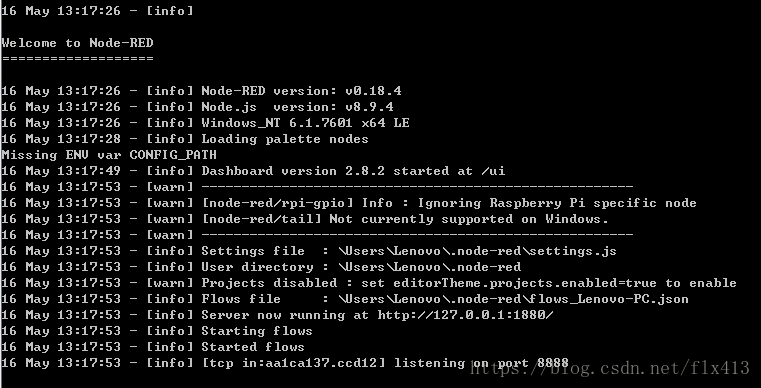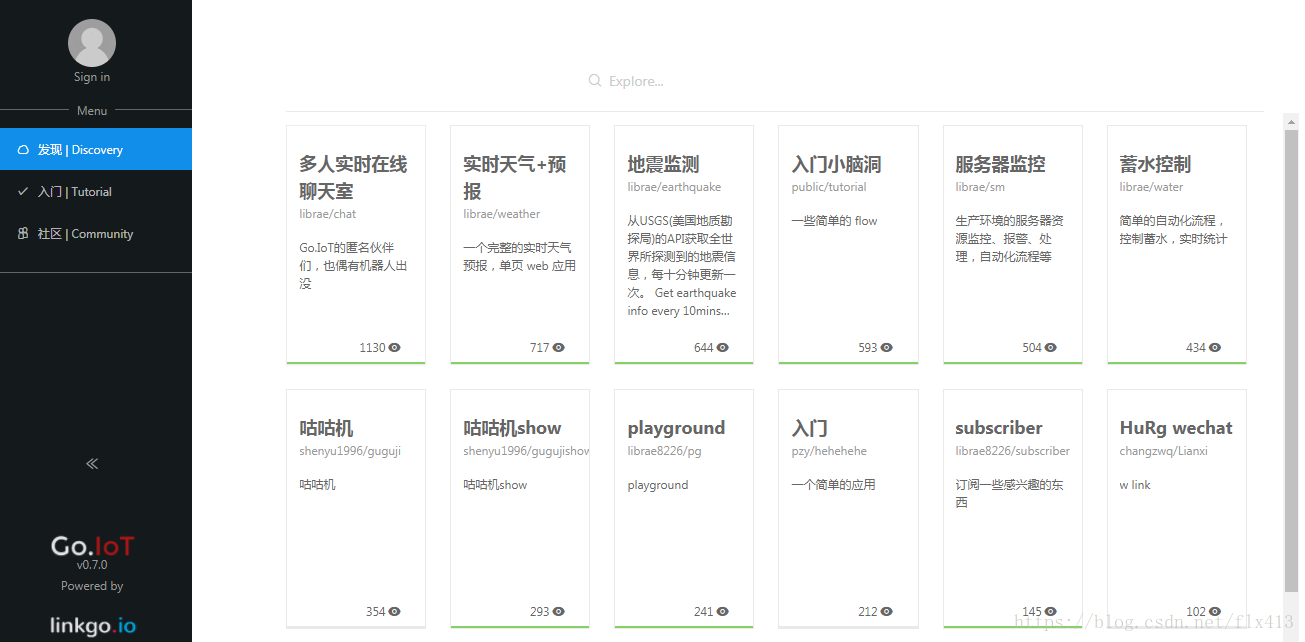安装Node.js
进入Node.js官网,http://nodejs.cn/download/ 选择本地操作系统下载安装包,下载.msi文件,运行安装node环境即可。运行cmd,输入node --version && npm --version,会显示相应的版本号。

安装Node-RED
打开cmd窗口,输入命令:npm install -g --unsafe-perm node-red
稍等片刻,Node-RED将会安装成功
运行Node-RED
打开cmd窗口,输入命令:node-red。等待几秒钟即可开启Node-RED服务器,终端会显示出Node-RED的版本号、Node.js版本号和一些Node-RED的必要运行环境目录等。

第一次运行Node-RED可能会卡在Loading palette nodes 或 Missing ENV var CONFIG_PATH就不动了,稍等一会或直接关掉重新运行即可。
此时Node-RED就已经开启,端口号是本地主机的8888,在浏览器中输入http://127.0.0.1:1880/ 便可以打开Node-RED的编辑环境。
云平台
这里推荐https://goiot.cc/ 这个社区,注册帐号进入控制台,即可开启自己的Node-RED服务。当然也有一些别人已经分享出来的基于Node-RED开发的应用。社区中有一些入门资料可以阅读。









 本文详细介绍了如何安装Node.js和Node-RED。首先,通过访问Node.js官网并下载安装包来安装Node.js。接着,使用npm全局安装Node-RED。在CMD中运行node-red启动服务,并在浏览器中访问127.0.0.1:1880以打开编辑环境。此外,还推荐了一个云平台goiot.cc,用户可以在该平台上注册并开启自己的Node-RED服务,获取更多资源和应用。
本文详细介绍了如何安装Node.js和Node-RED。首先,通过访问Node.js官网并下载安装包来安装Node.js。接着,使用npm全局安装Node-RED。在CMD中运行node-red启动服务,并在浏览器中访问127.0.0.1:1880以打开编辑环境。此外,还推荐了一个云平台goiot.cc,用户可以在该平台上注册并开启自己的Node-RED服务,获取更多资源和应用。
 最低0.47元/天 解锁文章
最低0.47元/天 解锁文章
















 2254
2254

 被折叠的 条评论
为什么被折叠?
被折叠的 条评论
为什么被折叠?








